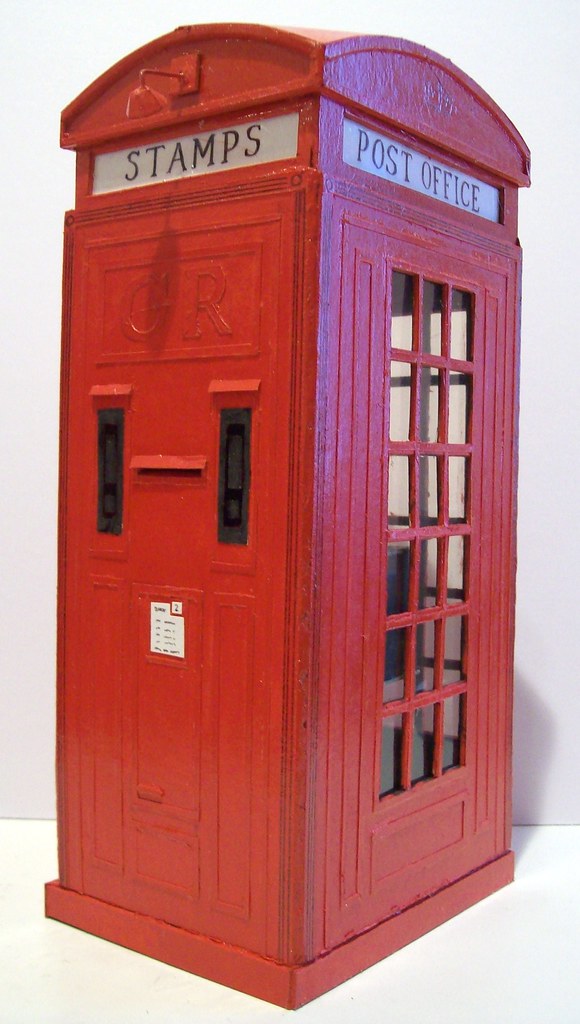Before the development of the telephone in 1876 communication over any distance was often by telegraphy and wireless telegraphy. The General Post Office (GPO), a Government department until 1969, held the monopoly on telegraphic communication in Britain.
The telephone was a marvellous technical innovation, but was very expensive, so their use in the closing decades of the nineteenth century was limited to wealthy homeowners and businesses.
There was not a single, unified system, instead the service was owned and operated by a number of private companies. These companies operated a series of local exchanges to which households and businesses could subscribe. This subscription provided them with a telephone and connection to the network.
The red telephone box, a telephone kiosk for a public telephone designed by Sir Giles Gilbert Scott, was a familiar sight on the streets of the United Kingdom, Malta, Bermuda and Gibraltar.
Despite a reduction in their numbers in recent years, the traditional British red telephone kiosk can still be seen in many places throughout the UK, and in current or former British colonies around the world. The colour red was chosen to make them easy to spot.
From 1926 onwards, the fascias of the kiosks were emblazoned with a prominent crown, representing the British government. The red phone box is often seen as a British cultural icon throughout the world. Although production of the traditional boxes ended with the advent of the KX series in 1985, many still stand in Britain.
The paint colour used is known as "currant red" and is defined by a British Standard, BS 381C-539.
Design history
-K1
The first standard public telephone kiosk introduced by the United Kingdom Post Office was produced in concrete in 1920 and was designated K1 (Kiosk No.1). This design was not of the same family as the familiar red telephone boxes. Very few high-quality examples remain. One example is located in Trinity Market in Kingston-upon-Hull where it is still in use.
| K1 Telephone Box |
The red telephone box was the result of a competition in 1924 to design a kiosk that would be acceptable to the London Metropolitan Boroughs which had hitherto resisted the Post Office's effort to erect K1 kiosks on their streets.
The Post Office chose to make Scott's winning design in cast iron (Scott had suggested mild steel) and to paint it red (Scott had suggested silver, with a "greeny-blue" interior) and, with other minor changes of detail, it was brought into service as the Kiosk No.2 or K2. From 1926 K2 was deployed in and around London and the K1 continued to be erected elsewhere.
 |
| K2 Telephone Box |
-K3
K3, introduced in 1929, again by Giles Gilbert Scott, was similar to K2 but was constructed from concrete and intended for nationwide use. Cheaper than the K2, it was still significantly more costly than the K1 and so that remained the choice for low-revenue sites. The standard colour scheme for both the K1 and the K3 was cream, with red glazing bars. A rare surviving K3 kiosk can be seen beside the Penguin Beach exhibit at ZSL London Zoo, where it has been protected from the weather by the projecting eaves and recently restored to its original colour scheme.
 |
| K3 Telephone Box |
-K4
K4 (designed by the Post Office Engineering Department in 1927) incorporated a post box and machines for buying postage stamps on the exterior. The design was not a success: the noise of the stamp-machines in operation disturbed phone-users, and the rolls of stamps in the machines became damp and stuck together in wet weather.Only 50 K4 kiosks were built.
 |
| K4 Telephone Box |
-K5
K5 was a plywood construction introduced in 1934 and designed to be assembled and dismantled and used at exhibitions.
 |
| K5 Telephone Box |
-K6
In 1935 the K6 (kiosk number six) was designed to commemorate the silver jubilee of King George V. It was consequently sometimes known as the "Jubilee" kiosk. It went into production in 1936.[5] The K6 was the first red telephone kiosk to be extensively used outside London, and many thousands were deployed in virtually every town and city, replacing most of the existing kiosks and establishing thousands of new sites.
The K6 has since become a British icon, but it was not universally loved at the start. The red colour caused particular local difficulties and there were many requests for less visible colours. The Post Office was forced into allowing a less strident grey with red glazing bars scheme for areas of natural and architectural beauty. Ironically, some of these areas that have preserved their telephone boxes have now painted them red.
 |
| K6 Telephone Box |
-K7 & K8 : Modernisation
In 1959 architect Neville Conder was commissioned to design a new box. The K7 design went no further than the prototype stage. K8 was introduced in 1968 designed by Bruce Martin.
 |
| K7 Telephone Box |
 |
| K8 Telephone Box |
-Privatisation and the KX series
In 1980, in preparation for privatisation, Post Office Telephones was rebranded as British Telecom (BT). In February 1981, it was announced that all the red telephone boxes would be repainted yellow, which was BT's new corporate colour.
After privatisation in 1982, British Telecom introduced the KX100, a more utilitarian design, which began to replace most of the existing boxes. The KX+, better known as the KX100 PLUS, introduced in 1996 featured a domed roof reminiscent of the familiar K2 and K6. Subsequent designs have departed significantly from the old style red boxes. BT followed the KX series with the Multi.phone in 1999 and the ST6 in 2007.
 |
| KX100 Telephone Box |
 |
| KX+ Telephone Box |
Sources:
Tidak ada komentar:
Posting Komentar